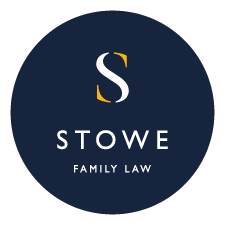The Online Dispute Resolution Advisory Group of the Civil Justice Council has published a report, in which it recommends the establishment of an Internet-based court service, to be known as ‘HM Online Court’ (HMOC). In his foreword to the report, the Master of the Roll Lord Dyson supports the idea, saying that online dispute resolution has “enormous potential for meeting the needs of the system and its users in the 21st Century.”
The Group’s terms of reference were restricted to civil claims under the value of £25,000, but they state that they believe that HMOC should also be extended to ‘suitable family disputes’. I have searched the report and, so far as I can see, the Group do not define ‘suitable family disputes’, so I am not sure exactly what kind of family disputes they had in mind.
Before I consider what kind of family disputes might be suitable for online resolution, I should explain that the Group recommend that HMOC should be a three-tier service. (Warning: what follows contains some jargon, as seems to be required in documents such as this report. I will attempt to translate into plain English.)
Tier One of HMOC should provide ‘Online Evaluation’, which basically seems to be an information service, whereby those involved in the dispute can obtain general legal advice and advice as to the options for resolving the dispute, such as negotiation, mediation or through the court. I’m not sure what further information is envisaged, over and above what is already readily available online, albeit not necessarily in one place.
Tier Two of HMOC should provide ‘Online Facilitation’, whereby the service will provide ‘online facilitators’ “to bring a dispute to a speedy, fair conclusion without the involvement of judges”. This seems to me to just be a fancy way of referring to mediation, some of which will be via the 20th Century technology of telephone. There will also be some ‘automated negotiation’, which sounds like a contradiction in terms to me, but is probably little more than a system through which the parties can negotiate directly between themselves – who would have thought of such a thing?
Lastly, Tier Three, for the estimated ten per cent of cases that will not be settled beforehand (where have we seen that figure before?) is the Online Judges themselves. They will decide the cases online, largely on the basis of papers submitted to them electronically, although once again supported by telephone conferencing facilities. We are told that the decisions of online judges will be binding and enforceable, enjoying the same status as decisions made by judges in traditional courtrooms, and that a court fee will be payable but much lower than in today’s courts (I’ll believe that when I see it).
So, in a nutshell the system will be information, followed by online mediation followed, if that is not successful, with a decision made by a judge on the papers, and transmitted to the parties online. Note (obviously) that the judge will not see any of the parties or those giving evidence, so will not be able to form a view based upon his or her impression of the party/witness.
What kind of family disputes would be suitable for such a system? For obvious reasons, I will only refer to private law family disputes not involving domestic violence.
Well, I think the first thing to say is that I’m not sure that such a system would be suitable for disputes involving arrangements for children, where the child’s welfare is of course the paramount consideration. I don’t think that even apparently straightforward children disputes should be resolved without the judge seeing the parties, although obviously they could be resolved via mediation in Tier Two.
On the other hand, I can certainly foresee financial disputes being dealt with online, at least the more straightforward ones. I really don’t see any logical differentiation between such disputes and the civil money claims that were covered by the Group’s terms of reference. And it need not be limited to financial disputes following divorce or breakdown of civil partnership – other types of family financial disputes could also be included, such as maintenance claims, Schedule 1 Children Act claims and even cohabitee property disputes (although the latter may only rarely be straightforward!).
Much of the change that we see these days is actually cost-cutting, dressed up as improvement. Online dispute resolution is clearly motivated at least in part by cost-cutting, although whether it will deliver actual improvement I’m not so sure. Whatever, it does seem that it is likely to be a feature of our justice system, including our family justice system, in the years to come.
To read the Online Dispute Resolution Advisory Group of the Civil Justice Council report, click here.



John, as a member of the ODR Advisory Group who wrote the Report I wonder if I may respond.
Your comments do not, with respect, fairly reflect the proposals within the Report . Further I am puzzled when you you say:-
“I have searched the report and, so far as I can see ,up do not define ‘suitable family disputes’, so I am not sure exactly what kind of family disputes they had in mind.”
when there is a paragraph in the Report explaining how the sort of system we envisage is being now operated by the courts in the Netherlands precisely for family cases and that such include divorce, custody and maintenance. It is true we did not go into detail of what we propose here because our remit was outside family.
Turning to the meat of what you say, Tier 1 is not simply the provision of general information such as already exists on the Internet. What we envisage will include intelligent evaluation and diagnostic tools that will provide tailored guidance so the parties begin by being better informed at the outset and assisted.
Tier 2 will no simply be mediation.
John, as a member of the ODR Advisory Group who wrote the Report I wonder if I may respond.
Your comments do not, with respect, fairly reflect the proposals within the Report . Further I am puzzled when you say:-
“I have searched the report and, so far as I can see ,up do not define ‘suitable family disputes’, so I am not sure exactly what kind of family disputes they had in mind.”
when there is a paragraph in the Report explaining how the sort of system we envisage is being now operated by the courts in the Netherlands precisely for family cases and that such include divorce, custody and maintenance. It is true we did not go into detail of what we propose here because our remit was outside family.
Turning to the meat of what you say, Tier 1 is not simply the provision of general information such as already exists on the Internet. What we envisage will include intelligent evaluation and diagnostic tools that will provide tailored guidance so the parties begin by being better informed at the outset and assisted with negotiating a fair and appropriate outcome.
Tier 2 will not simply be ” a fancy way of referring to mediation”. Firstly, we use the term ‘facilitators’ to avoid pre-conceptions as to the form of the process they will choose to follow. Secondly, we specifically include other forms of neutral resolution such as adjudication and non-binding recommendation, which we envisage will be guided by dynamically generated and constantly growing ‘machine learning’ knowledge such as on how previous disputes of similar profile have been evaluated and resolved.
You wrongly assume our use of the term ‘automated negotiation’ is ” probably little more than a system through which the parties can negotiate directly between themselves ” when it is much more than that. One again the Report, and especially the additional documentation on the Report website, gives examples of computer assisted negotiation such as blind bidding and crowd sourcing and the application of game theory in helping parties better prioritise their requirement and expectations. We consider Tier 3 as the key area that will grow in time to reflect constantly developing technology as it expands the power of artificial intelligence, knowledge management and the exploitation of Big Data.
As to Tier 3 you say “Note (obviously) that the judge will not see any of the parties or those giving evidence, so will not be able to form a view based upon his or her impression of the party/witness.” Our Report, however, included the ability of the judges to refer cases to traditional in-person hearings where appropriate to test the evidence etc.
Not all of what we foresee would be in place in the initial phase but as the Report say’ there is no finishing line in IT’. Thank you for raising the subject in your blog. By all means take a look at Rechtwijzer 2.0 , the Dutch family court system. I would be pleased to introduce you to those involved and welcome your further comments. The views of practitioners are of course vital to our Group.
If people give evidence by Skype, it will soon be possible to subject them to live voice-stress, micro-expression and blush analysis – so we know when they’re lying.
So no need for those expensive human judges anymore – hurrah!
There is a typo in my post above.
I say “We consider Tier 3 as the key area that will grow in time to reflect constantly developing technology as it expands the power of artificial intelligence, knowledge management and the exploitation of Big Data. ”
I meant to refer to Tier 2,